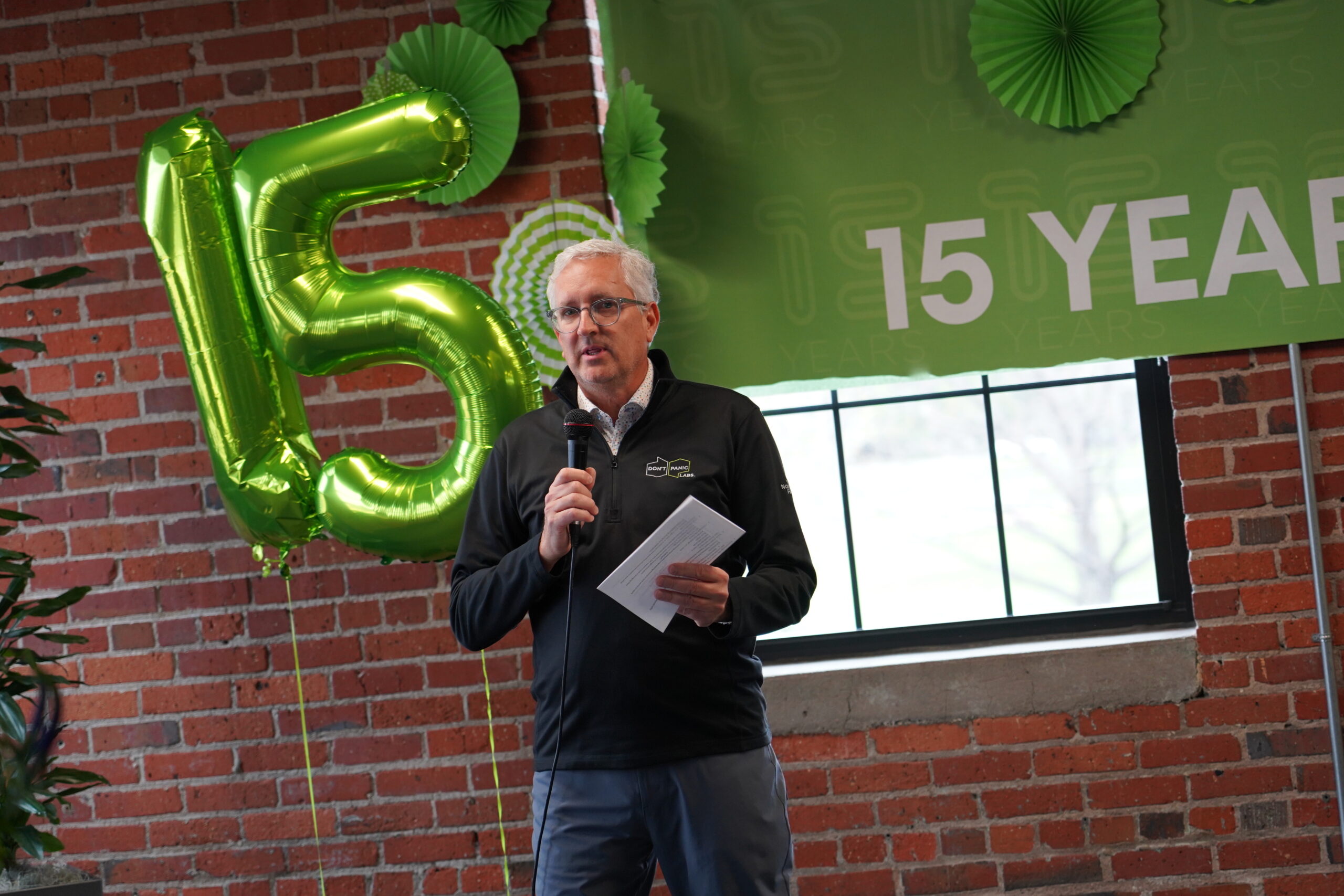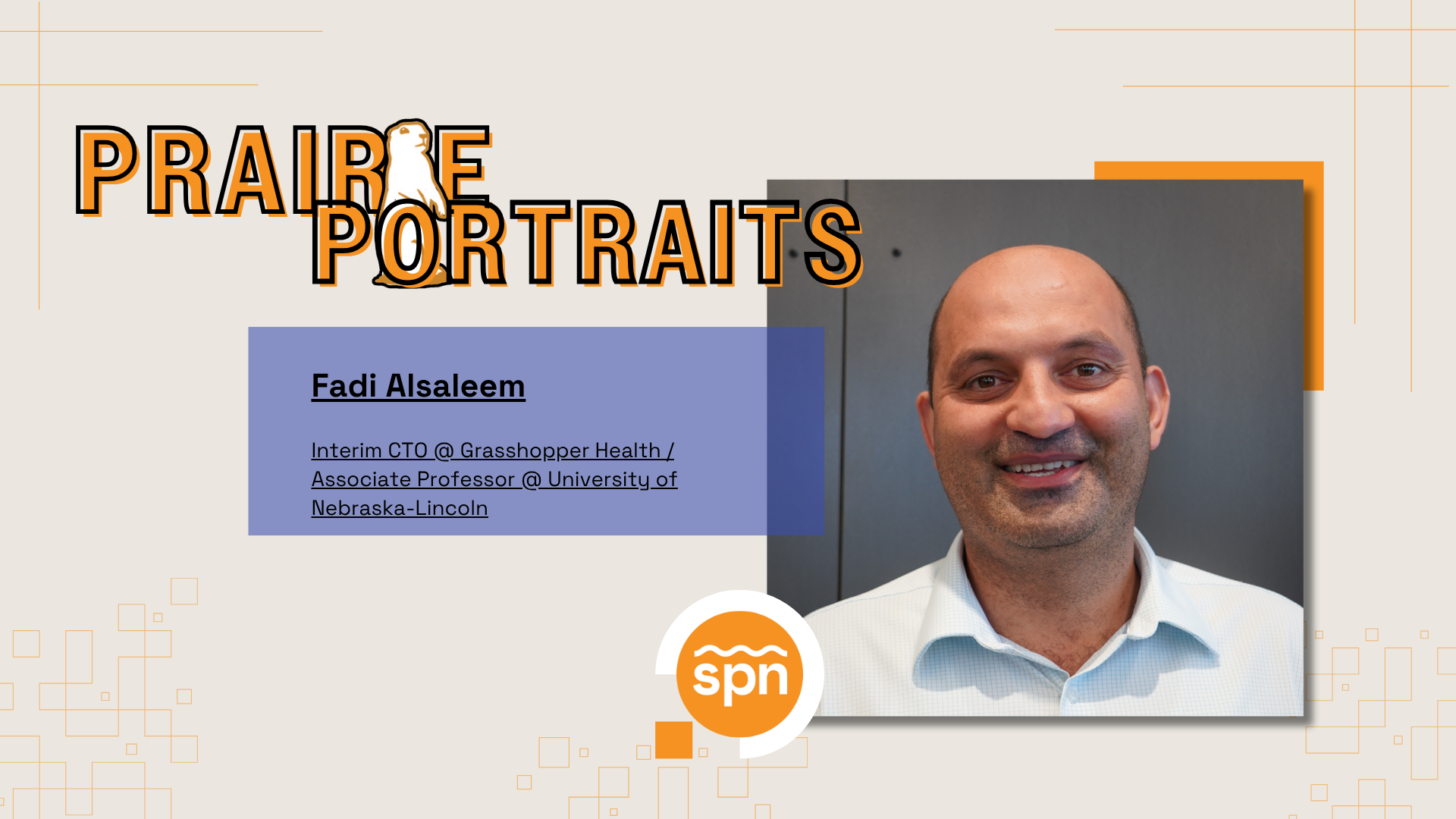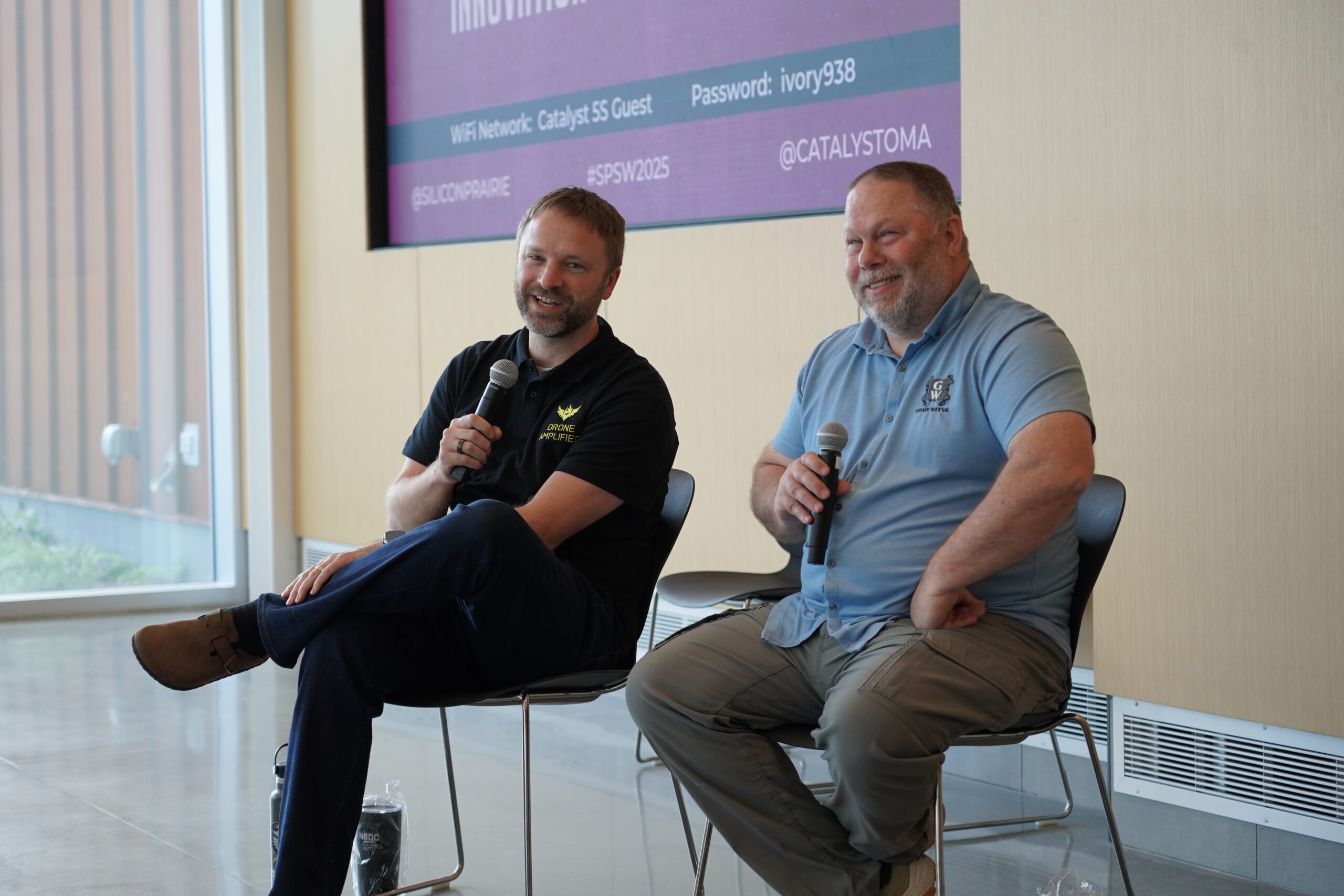Vestn, one of the Design Studio projects, was founded by a group of UNL undergrads.
On Friday, the University of Nebraska-Lincoln’s Raikes School held its annual Design Studio showcase, where juniors and seniors presented the yearlong projects they completed in partnership with real clients.
Here’s a bit about each of this year’s projects, and a sampling of what the students have learned since August:
Nelnet

Junior Alec Johnson, a computer science major from Peoria, Ill., did mostly back-end development on Nelnet’s customizable employee wellness system, but said “the management of our project was probably the most interesting part.” At the beginning of the year, they were handed a pretty blank slate; by the end, they focused in on front-end design for all of the features Nelnet had identified, and are handing off the finishing touches to Nelnet’s in-house technical staff.
“We try to find out what (the clients) want, even if they don’t know quite what that is yet,” Johnson said. “Nelnet was really helpful in that regard.”
Nebraska Global / Beehive Industries

The first half of Nebraska Global’s project was to develop a software development kit that allows its developers to write mobile apps in CSharp that will run the same on iOS, Android, and Windows, including features like GPS access.
The second half was the prove that the the SDK worked by building an app for Beehive Industries.
“Picking C Sharp as the language and .net, we assumed that Android and iOS would be the most difficult, as opposed to the Windows phone, but it turns out that’s not the case,” said Neema Bahramzad, a junior computer engineering major and Lincoln native. “On the Windows phone, it’s ground up.”
Vestn

Vestn, an e-portfolio service marketed to schools, is the first Design Studio project founded by UNL undergraduate students.
“We got in at the last second, so we had a lot of pressure to perform,” said co-founder Conner Dana, a senior business management and marketing major from Valley, Neb., who acted as the “client” for the year.
Raikes School students took the product from concept to version 2.0. The most challenging part was trying to release a version 1.0 halfway through the year, said co-founder Phil Baylog, a computer science and actuarial science major from Overland Park, Kan.
“As a result,” Baylog said, “we learned a lot about our user interface and our business strategy.”
Fiserv

This Fiserv team’s Android app allows individuals who are involved in a small business’s financial matters to check bank account balances and recent transactions, transfer between accounts or effect wire transfers, and set up alerts for transaction approvals, overdrafts, and various other events. If further action is needed, the app can connect the user to call their bank, or direct them to the nearest branch office.
“It kind of surprised me how much function you can fit into an app,” said Alec Agan, a junior computer science major from Omaha. Usually, he said, you think of a mobile app as “a scaled-down version of the web,” but “in the end, we ended up throwing a lot more on.”
UNL’s College of Journalism and Mass Communications

Jared Wiebelhaus and his teammates spent the fall semester building the back-end development of their project – using Python, Django and more than 20 open-source libraries – then did front-end design this spring. In the process, they “learned a lot about how to tell a story” and make that story as engaging as possible.
“Journalism usually ends on publication,” said the junior business management major and Lincoln native. Their web app, built with the iPad and other tablets in mind, “allows people to get involved, do something.”

Global Eyewitness, which the team assigned to UNL’s College of Journalism and Mass Communications worked on, uses photojournalism to capture the people and communities throughout the world.
Microsoft Dynamics

Microsoft’s project involved securely delivering financial reports on Windows phones. The existing constraints were the biggest surprise for “scrum master” Nicholas Bigelow, a junior computer science major originally from Bellevue, Neb.
“It’s easy to make a system from the ground up, but when there’s a lot of existing stuff, it can be hard to plug into,” he said.
Assurity Life Insurance Company

Taylor Clark‘s team designed an Android messaging and notification system for insurance agents that allows the company to communicate with its agents about missing paperwork and other issues. The Design Studio product will streamline the life insurance company’s current system, which sends out hundreds of encrypted PDFs via a daily email, all on a 24-hour delay.
“It affects not only the agents, who are independent of the company themselves, but then it trickles down to the customer,” said Clark, a junior computer science and math major from Vermillion, S.D.
The most unique challenge his team faced, he said, was making sure no private, policy-related information was stored on the mobile devices.
Werner Enterprises

Werner Enterprises asked its Design Studio team to develop a mobile interface (Android, iOS, and mobile web) for its existing shipment tracking system.
“It’s essentially all of the information, just displayed differently,” said Steve Voznyuk, a senior computer science major from Lincoln.
His teammate Billy Kjelden, a senior computer engineering from Vermillion, S.D., said the biggest challenge was learning the intricacies of all three platforms but presenting the information the same way, “so if you’re a Werner customer, and you learn this on an iPad, you don’t have to learn it again on Android.”
Proxibid

The Proxibid team built an Android app to take the company’s online auction software into the mobile realm, which junior Christine Yost said the client may roll out next year.
The computer science major from Omaha said her team was “closely involved with a lot of manual tests.” Those tests “helped find a lot of ways that the app crashes” that unit tests wouldn’t have picked up.
Speedway Motors

Lincoln-based Speedway Motors commissioned “My Crew Chief,” an Android and web app that allows racing teams to track and analyze data from race to race and track to track.
The hardest part of the project was getting up to speed on the lingo and user-specific knowledge, said senior computer engineering major Matt Munger. They started with a field trip to Eagle Raceway, followed by coaching by Kyle Murphy, Hudl’s VP of user experience.
“It was invaluable. It was ridiculously helpful,” Munger said. “I’m sure it wouldn’t have looked terrible by any means, but it wouldn’t have been close without people like Kyle.”
Cerner

The Cerner project is aimed at helping elderly and at-risk individuals maintain the freedom of living on their own – at a reasonable cost. The students’ system tracks and logs a person’s movement from room to room so that relatives can keep an eye on them from anywhere via “the cloud.”
Juniors and Lincoln natives Jamison Schuster (computer engineering) and Mike Varilek (computer science and economics) said their biggest hurdle was confronting a new request to design a user interface just a couple of months ago.
Credits: Screenshots from vestn.com and unlglobaleyewitness.org.



